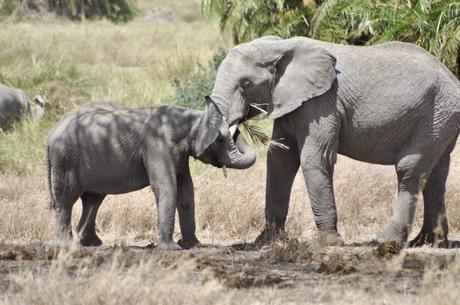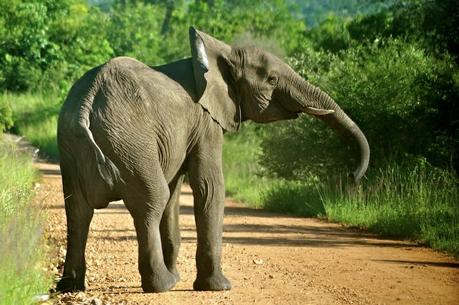It's well known that widespread poaching in Africa has had dire consequences for the elephant population.Despite the fact that the ivory trade was banned worldwide in 1990, it is believed that more than 30,000 elephants are killed each year for their tusks. This has led to the animals being listed as critically endangered, despite ongoing efforts to protect the gentle creatures.
According to a new report however, evolution may lend a hand in protecting the wild pachyderms. Researchers have discovered a noticeable rise in tuskless elephants in Africa, quite possibly as natural defense against poachers.

Rise of the Poacher
The demand for ivory can be traced back as far as the Roman empire, although it wasn't until the 14th century that it truly became a much-sought after luxury good. That's when Portuguese explorers and merchants began mapping the coast of Africa and started harvesting the tusks of elephants along the way.
For the next 500 years hunters traveled the length and breadth of the continent, killing hundreds of thousand of elephants. By then, the international ivory trade had grown to immense proportions and because of this, the species was pushed nearly to the brink of extinction. It wasn't until the 20th century that the general public became more aware of how demand for ivory was impacting the creatures. And as many African nations gained independence in the 1960s, they took steps to limit hunting, created nature preserves, and protect the elephants from harm.
Despite the shift in public sentiment however, the illegal ivory trade remains a lucrative business 30 years after it was banned. There are still some parts of the world-including the U.S. and China-where the demand remains high. Because of this, poachers still hunt elephants, slaughtering them just to harvest their tusks. And while there are some signs that ivory isn't the hot commodity it once was, there is still a great deal of money to be made on the black market.

Evolution in Action
The poacher's singleminded quest for ivory has led the hunters to ignore elephants that don't have tusks. After all, why waste time and resources on stalking and killing a creature that is essentially worthless to them? Naturally, this means that tuskless elephants are much safer in the wild, allowing more of them to flourish than was common in the past.
The study that was released last week was based on 28 years of research that included 15 years of civil war in Mozambique. During that time, the factions on both sides of the conflict turned to the ivory trade to finance their operations. It is believed that they decimated the elephant population in Gorongosa National Park to the point that 90% of the elephants that were living there prior to 1977 had been killed off by the time the war ended in 1992.
However, following the end of the conflict the elephant population slowly began to rebound. And as it did, there was a 30% rise in the number of females that did not have tusks. Researchers believe that during the civil war, a tuskless elephant was five times more likely to survive, which in turn allowed the genetic mutation that led them to not have tusks to be passed on to a new generation as a result.
Long Term Consequences?
One of the more interesting angles of the study is that the evolutionary change took place at a fairly rapid pace. Generally, these kinds of changes take several generations to take hold, but the rise in tuskless elephants in Africa has ben relatively short order. But, the researchers warn that it could have long term consequences to the lives and behavior of the animals.
Elephants use their tusks to aid in feeding, self defense, and when socially interacting with other members of their herd. How those behaviors will change over time remains to be seen, particularly if tusklessness becomes a more dominant trait in the generations to come. Those type of shift in physiology and behavior will have tone studied further in the future to truly understand the full impact.
While poaching remains a major threat to African elephants, it is fascinating to see these amazing creatures evolving in ways to that could help improve survivability in the long run. Having witnessed African elephants in the wild on many occasions, I can't begin to tell you what a tremendous loss it would be for them to be hunted to extinction.
Hopefully, the evolution of tuskless elephants, combined with efforts to end poaching and the ivory trade, will make sure that never happens.



